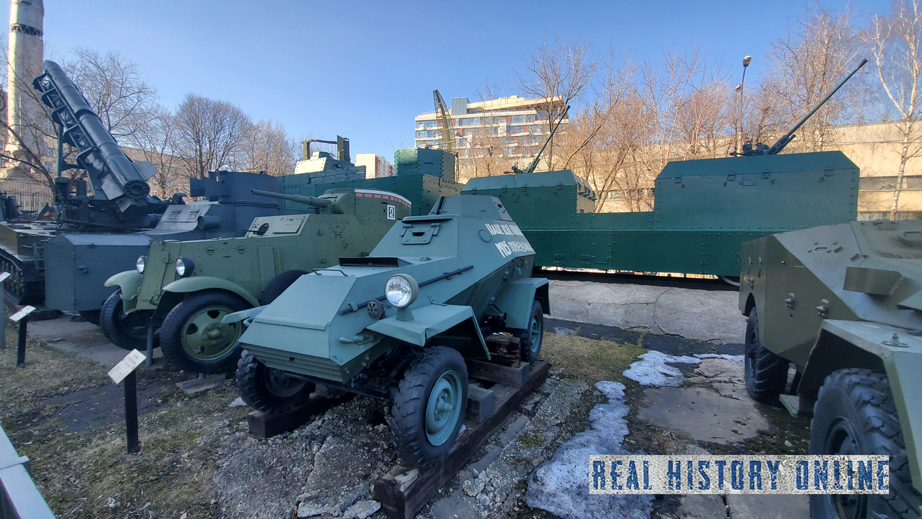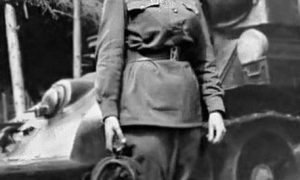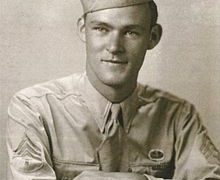BA-64 – Soviet light armored car during the Second World War. It was created in July – December 1941 on the chassis of the GAZ-64 all – wheel drive passenger car using pre-war Soviet developments on all-wheel drive armored vehicles of a new generation, as well as the experience gained from studying captured German armored vehicles. BA-64 became the first Soviet serial all-wheel drive armored car, remained the only vehicle of this class, adopted in the USSR during the war, and also became the last Soviet armored car of the classic type. In total, during the serial production of the BA-64, from April1942 to early 1946, 9069 armored vehicles of this type were produced.

BA-64B with an SG-43 machine gun is the designation adopted in the literature for an experimental version of the BA-64B equipped with an SG-43 machine gun. The prototype of such an armored car was made on the basis of the BA-64B at the GAZ design bureau in March 1944 and differed from the production vehicle by the installation of the new SG-43 machine gun adopted in 1943, which surpassed the DT-29 in the increased combat rate of fire due to the tape power supply and a higher aiming firing range. The tests revealed a number of problems with the placement of the machine gun in the turret and its behavior when firing, which led to the termination of further work in this direction. BA-64D with a DShK machine gun – an experimental version of the BA-64 with the installation of a large-caliber 12.7 mm DShK machine gun. Unlike the standard DT-29, the armor penetration of the DShK made it possible for the armored car to fight light armored vehicles , and in combination with the significantly greater weight of the second salvo , it sharply increased its effectiveness in providing air defense. Work on the BA-64D began in September 1942 , but at the initial stage it became clear that the dimensions and recoil of the DShK (much larger than that of the standard DT machine gun), as well as the need to install a K-8T collimator sight for anti-aircraft fire, require the creation of a new, more rigid tower structure. Redesign work began on October 3, 1942, and the BA-64D prototype was completed on March 20, 1943. It was distinguished from the production vehicle, first of all, by the new tower of increased size, with the thickness of armor plates increased to 12 mm. The tower was installed on a ball bearing on the roof of the fighting compartment, which also had to be expanded and reinforced, and was directed horizontally using a screw mechanism. Since the standard box with the DShK cartridge belt in the cramped turret could not be placed, the designers had to replace it with a drum magazine for 30 rounds…



On April 6, a demonstration of an armored car was held, which revealed the unreliable operation of the machine gun with a new magazine and a decrease in firing accuracy due to the swinging of the light and narrow-gauge chassis with the powerful recoil of the machine gun. Despite the work begun to eliminate the BA-64E drawbacks , transferred to a more suitable BA-64B chassis , the main one – the unreliable magazine power supply for the machine gun, could not be eliminated, and as a result, work in this direction was stopped. The possibility of installing a 25-mm automatic cannon in the turret was also being worked out, but this development did not even reach the construction of a prototype. BA-64 with an anti-tank rifle – various options for installing a 14.5-mm PTRS-41 anti – tank rifle on the BA-64 were studied.
The Second World War in a large was decided by Soviet designers. The weapons they developed were distinguished by simplicity, ruggedness and reliability. In 1941, in 22 days, anti-tank rifles of the Degtyarev and Simonov systems were created. For two years, these guns remained the most effective weapon against Axis armored vehicles.
The armor penetration of the PTRS made it possible for the armored car to fight light and, in part, with medium armored vehicles, by reducing the effectiveness of the vehicle’s armament for performing other tasks. The development of the PTRS installation on the BA-64 was started on November 2, 1942, but was later postponed due to the higher priority of the BA-64D. Work on the installation of an anti-tank rifle, repeatedly resumed and postponed again, continued in 1943, but was eventually discontinued. Independent installation of the PTRS-41 instead of a machine gun was carried out in some parts, but did not receive widespread use.
BA-64’s were actively used by Soviet troops from the summer of 1942 until the end of the war, mainly as reconnaissance vehicles, but also for direct support of the infantry. In the post-war years, BA-64 were used mainly as training combat vehicles and were removed from service by the Soviet Army in the first half of the 1950s. BA-64 was also supplied to a number of allied countries of the USSR and was used on an insignificant scale by the DPRK army in the Korean War.











